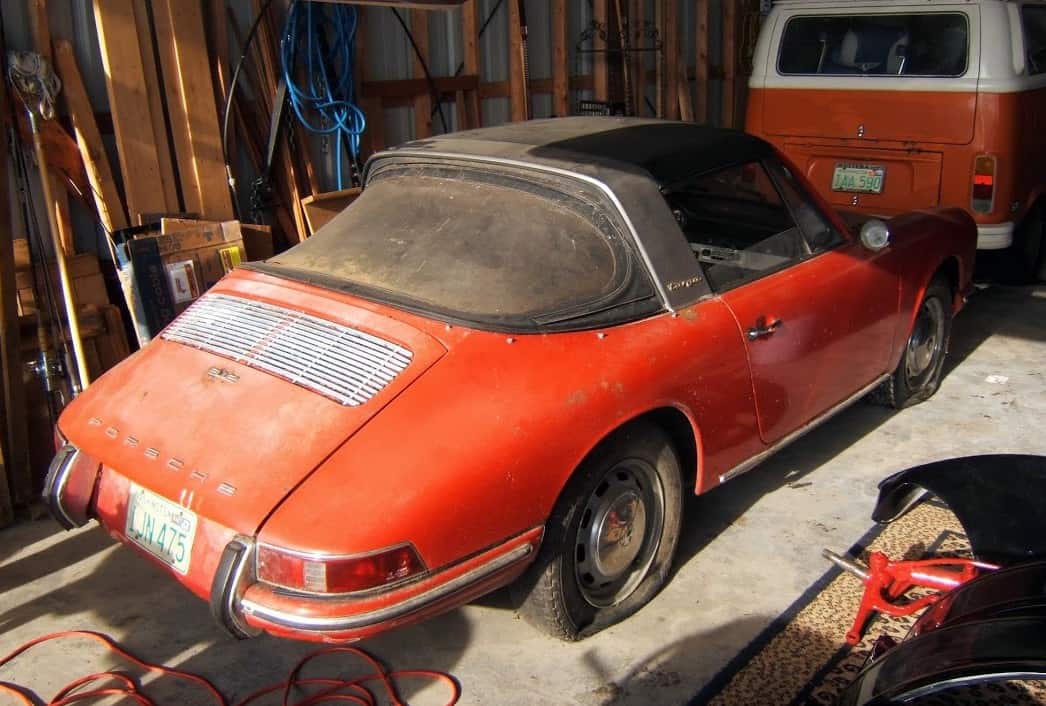Porsche 911
It doesn’t take a serious car expert to know about the iconic 911 series from Porsche.
Let’s dive into the 911’s storied history before highlighting some critical models of the famous line.
911 Early History
911’s served as the successor to the Porsche 356. It didn’t take long for Porsche’s new series to make an impact among car enthusiasts. The first 911 prototype was shown at the Frankfurt IAA Motor Show in 1963 as the 901 and was soon renamed the 911 for market release in 1964.
An air-cooled six-cylinder flat engine with two-liter displacement added up to 130 hp and an impressive top speed of 130 miles per hour. Those looking for a less powerful Porsche soon had the option of picking up the four-cylinder Porsche 912.
In 1966, Porsche revealed the 160 hp 911 S featuring forged alloy wheels from Fuchs, the first of its kind. The 911 Targa debuted in late 1966 as the first-ever safety cabriolet.
Semi-automatic Sportomatic four-speed transmission made an appearance in the 911 lineup in 1967. 911 T models helped Porsche become the first German manufacturer to comply with strict US exhaust emission control regulations. As displacement increased, Porsche 911’s gained power.
1972 911 Carrera RS models are the definition of a dream car with 210 hp and weighing less than 1000 kg. Rear spoilers additionally made their first appearance on a vehicle with the introduction of 1972 911 Carrera RS models.
1973 G-Series: A Major Success
1973 G-Series vehicles received a significant do-over as Porsche had been producing 911 models for ten years with positive results. Built from 1973-1989, the 1973 G-Series was constructed longer than any other 911 generation.
Standard crash standards were met in the United States with the G-Series’ prominent bellow bumpers. Headrests and three-point safety belts helped boost the overall protection of G-Series occupants as well.
Power was defined through Porsche’s release of the 1974 911 Turbo with a three-liter 260 hp engine that was complimented by a massive rear spoiler. Luxury and performance with the 911 Turbo helped define Porsche’s image in 1974.
1977 led to 300 hp with the Porsche Turbo 3.3 equipped with a charge-air cooler. Open-air drivers could enjoy 911 cabriolet models in 1982. Ending the successful G-Series was the 911 Carrera Speedster that served to carry on the tradition and spirit of previously unbeaten Porsche vehicles.
1988 Introduction of All-Wheel Drive
Alternately named the 964, in 1988, Porsche released the 911 Carrera 4. What made the 964 unique was 85 percent new components that led to a more modern and sustainable vehicle. Nine hundred sixty-four engines delivered a solid 250 hp.
While the 964 only differed slightly on an external level from its predecessors, aerodynamic polyurethane bumpers and an automatic extending rear spoiler were added. Technical differences were what marked the introduction of a new Porsche with the 964.
Sporty performance and enhanced comfort served as a lethal combo for 964 models. ABS, power steering, airbags, and a redesigned chassis had consumers captivated.
All-wheel drive Carrera 4 models was a revolutionary addition to the 911 line from the start.






























